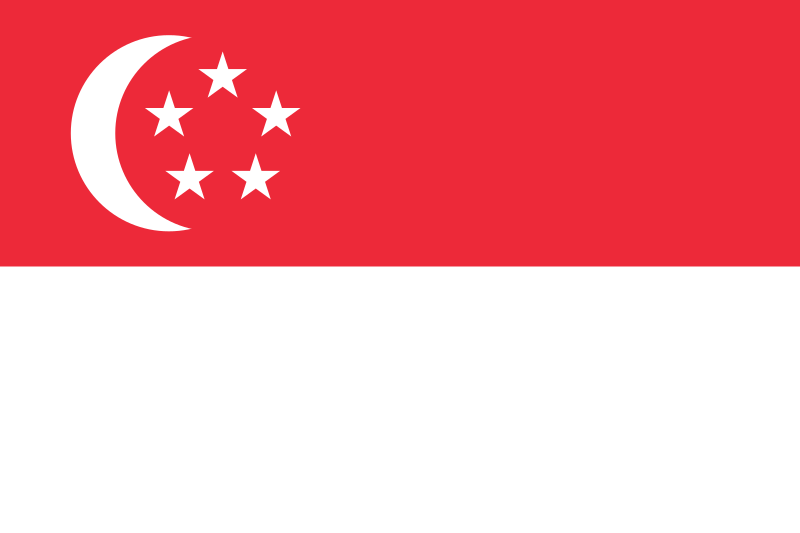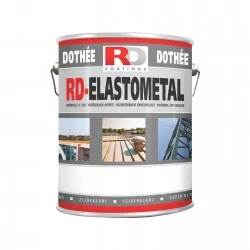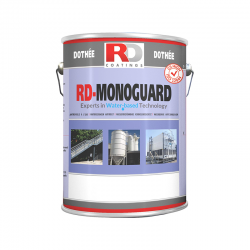Sustainably renovate rusted steel structures and objects, easily and without sandblasting or grit blasting: practical methods to achieve a clean and neat finish.





Products presented
RD-Elastometal High performance elastomeric coating combining superior anti-corrosion and waterproofing...
From €18.92 / Kg View
High performance elastomeric coating combining superior anti-corrosion and waterproofing...
RD-Monoguard SG The Benchmark in High-Performance Anti-Rust Paint for C4 and C5 Environments.
From €33.03 / L View
The Benchmark in High-Performance Anti-Rust Paint for C4 and C5 Environments.
The problem
Renovating old metal objects presents a significant technical challenge.
Their surfaces are rarely uniform: some areas have lost all protection, others show deep pitting caused by corrosion, while some parts may appear intact on the surface but conceal rust deep within. This heterogeneity makes localized repairs time-consuming, costly, and often visually unappealing.
In industry, sandblasting or grit blasting (Sa 2.5) is traditionally considered an essential step before applying an anti-corrosion system, to ensure lasting protection. This remains true for many conventional rust-proof paint systems.
RD Coatings is changing the game.
Thanks to innovative coating technology, our high-performance solutions effectively treat oxidized surfaces without the need for sandblasting or grit blasting.
Suitable for a wide range of steel structures and equipment, our solutions simplify maintenance and renovation operations. Validated by both field expertise and tests conducted in accredited laboratories, they have proven effective even in harsh environments such as marine or industrial settings.
Easy to apply and quick to implement, our coatings reduce downtime while ensuring long-lasting protection.
The solution
RD-Elastometal & RD-Monoguard
The combination of our two water-based protective coatings—among the most innovative and high-performing on the market—offers a simple, economical, and highly effective solution for most metal renovation scenarios.
RD-Elastometal is a unique coating that combines waterproofing and top-tier anti-corrosion protection. Water-based and single-component, with very low VOC content, it delivers outstanding sealing and corrosion-resistance properties. With elasticity exceeding 200%, RD-Elastometal adapts perfectly to surface movements and deformations, ensuring long-term adhesion.
RD-Monoguard features all the benefits of next-generation coatings: water-based, single-component, low VOC, fast drying, and high-performance corrosion protection. It also provides a semi-gloss enamel-like finish, delivering both aesthetics and protection.
These two exceptional systems are used in large-scale projects such as the Øresund Bridge—one of Europe’s longest steel structures, connecting Denmark to Sweden—exposed to some of the harshest marine conditions.
The required paint thickness depends on the environment, project type, and desired longevity. However, since surface preparation and labor account for the majority of renovation costs, we generally recommend opting for the most high-performance solution to maximize durability and return on investment.
System(s)
1. Aggressive industrial and marine environment – C5 category according to ISO 12944
Interior: Buildings or areas with almost constant condensation and high pollution levels.
Exterior: Industrial zones with high humidity and an aggressive atmosphere, and coastal areas with high salt exposure.
Estimated system lifespan: minimum 15 years in a C5 environment or 25 years in a C4-type environment.
| Product | Consumption | Dry film | |||
| 1st layer | RD-Elastometal | 0,50 kg/m² 106 s/f-g | 220 µ 9 mils | ||
| 2nd layer | RD-Monoguard | 0,20 L/m² 220 s/f-g | 80 µ 4 mils | ||
2. Moderately aggressive industrial or marine environment – C4 category according to ISO 12944
Interior: Chemical plants, swimming pools, coastal facilities with moderate condensation.
Exterior: Industrial areas with moderate pollution, coastal zones with low salt exposure.
Estimated system lifespan: minimum 15 years in a C4 environment or 25 years in a C3-type environment.
| Product | Consumption | Dry film | |||
| 1st layer | RD-Elastometal | 0,40 kg/m² 130 s/f-g | 175 µ 7 mils | ||
| 2nd layer | RD-Monoguard | 0,20 L/m² 220 s/f-g | 80 µ 4 mils | ||
3. Mild urban or industrial environment – C3 category according to ISO 12944
Interior: Chemical plants, swimming pools, coastal facilities with moderate condensation.
Exterior: Industrial areas with moderate pollution, coastal zones with low salt exposure.
Estimated system lifespan: minimum 15 years in a C4 environment or 25 years in a C3-type environment.
| Product | Consumption | Dry film | |||
| 1st layer | RD-Elastometal | 0,27 kg/m² 190 s/f-g | 120 µ 5 mils | ||
| 2nd layer | RD-Monoguard | 0,20 L/m² 220 s/f-g | 80 µ 4 mils | ||
Application conditions and work preparation
Environmental conditions (general requirements) :
- Minimum air and substrate temperatures: 10°C / 50°F for 24 hours.
- Maximum surface temperature: 55°C / 130°F.
- Maximum relative humidity: 80%.
- Surface temperature must be at least 3°C / 5°F above dew point.
- No threat of rain for 3 hours.
/!\ Notes
- There must be no condensation on the surface during application and drying. Caution when working at the beginning or end of the season!
- Overnight drying between coats is generally recommended. However, drying rates for water-based coatings depend on temperature, humidity and wind.
- From 15°C / 59°F, working conditions are comfortable and enable higher productivity.
- If the project is located in a very hot area with very intense sunshine during the day, avoid applying the system when the sun is most intense on the surface, and prefer to work early in the morning, late in the afternoon or in the shade.
Surface preparation
The surface must always be clean, dry, free of grease and contaminants. Rust or loose paint must be removed.
Accepted methods and standards :
- High-pressure cleaning to SSPC SP12 WJ4.
- Manual or mechanical derusting ST2 - ISO 8501-1 / SSPC SP2 or SP3.
- High-pressure cleaner with rotating nozzle at 0° angle, minimum 180 bar / 2600 psi.
Existing Paints
Paint coatings that can withstand high-pressure cleaning (> 300 bar / 4000 psi) can generally remain in place and be overcoated with RD-Elastometal.
If the remaining paint film is very smooth or glossy, sanding is recommended to increase surface roughness.
If there is any doubt about compatibility with our systems, a preliminary adhesion test is advised.
Manual cleaning or the use of power tools is also an option and is recommended when a more detailed surface preparation is required, particularly on smaller objects, heavily rusted areas, or surfaces that are difficult to reach with a pressure washer.
Moss and mold must be removed down to the root using appropriate cleaning agents.
Direct Environment
Observe the presence of any chimneys or ventilation units that may expel contaminants onto the surface to be treated. Neutralize their effects during work.
RD-Eco Powerclean
Use RD-Eco Powerclean just before application to ensure that the surface is clean and degreased. Particularly in the presence of stubborn dirt, oil, grease or pollution on the surface, or where there is a long lap of time between surface preparation and the start of the application.
Inspection of bolts/fasteners
Inspect the condition of the bolts securing the metal sheets to each other and to the wall structure. Defective bolts and fasteners must be repaired or replaced.
Tip
Applying a coat of RD-Metal Unicoat or RD-Elastometal over each fastener after inspection will not only help visualize the progress of the inspection, but also add a first protective layer over these weak spots. This step is recommended in harsh environments or on heavily rusted surfaces.
Edges and corners
Check edges and corners. These are the areas most prone to corrosion. In case of corrosion or bare metal, apply RD-Elastometal with a brush.
Application Steps
1. Sharp edges, bolts, and rivets
In the presence of corrosion or bare metal, apply one coat of RD-Elastometal with a brush to these elements to ensure optimal protection.
2. Openings, gaps, and joints
Apply one coat of RD-Elastometal with a brush to narrow areas, joints, and connections between beams or metal plates.
Larger openings of several millimetres must then be filled with a sealant such as RD-Acryl W or MS Polymer.
⚠️ Never use silicone-based sealants, as they compromise system adhesion.
3. Welds
Brush-apply one coat of RD-Elastometal over all welds.
4. Main surface
• 1st coat: Apply RD-Elastometal over the entire surface, respecting the recommended film thicknesses.
Drying time: ± 6 hours depending on weather conditions.
• 2nd coat: Apply RD-Monoguard over the entire surface, also following the specified film thicknesses.
Drying time: ± 2 hours depending on weather conditions.
Application material
RD-Elastometal
Brush
Airless device: minimum pressure 180 bar / 2600 psi. Nozzle opening: 0.015 - 0.023 in.
RD-Monoguard SG
Brush, roller or airless (nozzle opening: 010 – 012). Airless application is recommended and makes it easier to achieve the recommended thicknesses. Use a device allowing a minimum pressure of 70 to 150 bars / 1000 to 2200 psi at the outlet.
RD-Eco Powerclean
Low-pressure sprayer. Allow to work, then rinse.
Tool cleaning
Clean with clean water only.
Product application
RD-Elastometal
Ready-to-use product. Stir mechanically a few minutes before application. Do not dilute.
Drying time: (20°C - 68°F)
Touch-dry: +/- 3 hours
Recoatable: +/- 6 hours
RD-Monoguard SG
Product ready to use. Dilute up to a maximum of 3% with water for airless use in hot weather (> 25°C / > 77°F).
Drying time: (20°C – 68°F)
RD-Eco PowerClean
Dilute between 5 and 20% in water, depending on degree of soiling. Spray on and leave for 15 minutes. Then rinse with a high-pressure cleaner.
/!\ Adjust the cleaning pressure according to the type of object, its condition, and the environment.
An object in relatively good condition and located in a low-aggressiveness environment can be effectively cleaned with a pressure of around 200 bar.
Conversely, a heavily soiled and corroded object in a marine or industrial environment may require a higher pressure of up to 500 bar for optimal cleaning.
VERS. S9-251030









